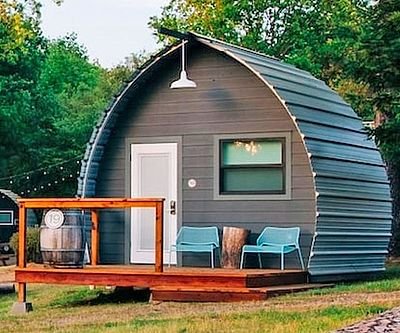Are Cabin Kits Cheaper Than Traditional Home Construction?
In this article, we will compare the costs, advantages, and drawbacks of both options to help you determine the best choice for your needs.

Building a home is a significant investment, and many prospective homeowners seek cost-effective solutions to make their dream a reality. One alternative that has gained popularity in recent years is cabin kits. These prefabricated structures promise an affordable, efficient, and streamlined approach to homebuilding. But are cabin kits truly cheaper than traditional home construction? In this article, we will compare the costs, advantages, and drawbacks of both options to help you determine the best choice for your needs.
Understanding Cabin Kits
Cabin kits are prefabricated packages that include all the necessary materials to construct a cabin. These kits typically consist of pre-cut wood, doors, windows, roofing, and other essential components. Many manufacturers offer various designs and sizes, allowing buyers to choose a style that suits their preferences and budget.
Cabin kits come in different levels of completion:
-
Shell-Only Kits: Provide the basic structure without interior finishes.
-
Dry-In Kits: Include doors, windows, and weatherproofing.
-
Turnkey Kits: Offer everything needed to complete the cabin, including electrical and plumbing systems.
Understanding Traditional Home Construction
Traditional home construction follows the conventional building process, involving architectural planning, site preparation, framing, insulation, plumbing, electrical work, interior finishing, and inspections. These homes are usually built from the ground up by professional contractors, requiring substantial time and financial resources.
Cost Comparison: Cabin Kits vs. Traditional Home Construction
1. Initial Costs
Cabin kits are generally more affordable than traditional home construction due to the pre-designed and pre-cut materials, reducing labor and material waste. The price of a cabin kit varies depending on size and included features, but many budget-conscious buyers can find small cabin kits for under $25,000. Traditional home construction, on the other hand, requires significant upfront investment, including land preparation, architectural fees, permits, and material costs.
2. Labor Costs
One of the most significant cost-saving aspects of cabin kits is the reduced labor expense. Many cabin kits are designed for DIY assembly, allowing homeowners to build their structures with minimal hired labor. In contrast, traditional homes require skilled professionals, including architects, electricians, plumbers, and carpenters, all of whom add to the overall cost.
3. Material Costs
Cabin kits typically use standardized materials, which reduces material waste and allows manufacturers to offer competitive pricing. Traditional homes require customized materials based on specific design requirements, increasing costs due to variations in size, quality, and supplier pricing.
4. Time Efficiency
Cabin kits are designed for quick assembly, with some models taking only a few weeks to complete. Traditional homes, however, require months of planning, permitting, and construction. The extended timeline of traditional construction often results in additional costs related to labor, financing, and temporary housing.
5. Permits and Inspections
Both cabin kits and traditional homes require permits, but the complexity and cost differ. Traditional home construction typically involves multiple permits for zoning, structural safety, plumbing, and electrical work, leading to higher fees. Cabin kits, particularly smaller or off-grid models, may have fewer permitting requirements, reducing overall costs.
Pros and Cons of Cabin Kits
Pros:
-
Lower overall costs: Prefabricated materials reduce waste and labor expenses.
-
Faster construction: Many kits can be assembled in weeks rather than months.
-
DIY-friendly: Some cabin kits are designed for homeowners to build without professional help.
-
Minimal site preparation: Often requires less land modification than traditional homes.
Cons:
-
Limited customization: Buyers must choose from pre-designed options with minimal modifications.
-
Additional expenses: Utilities, foundation work, and interior finishes may add to the final cost.
-
Smaller size: Most cabin kits are compact, limiting space for growing families.
Pros and Cons of Traditional Home Construction
Pros:
-
Full customization: Homeowners can design their homes from the ground up.
-
Increased property value: Traditional homes often have higher resale value.
-
Greater space and functionality: Suitable for larger families and long-term living.
Cons:
-
Higher costs: Material, labor, and permit expenses add up quickly.
-
Longer construction timeline: Building a traditional home can take months to years.
-
More complex permitting: Requires multiple inspections and approvals.
Which Option is Right for You?
If affordability and speed are your top priorities, a cabin kit might be the best choice. These kits provide a budget-friendly and efficient way to own a home, especially for those comfortable with DIY projects. However, if you seek full customization, more space, and a higher long-term property value, traditional home construction may be the better investment.
Ultimately, the right decision depends on your financial situation, long-term goals, and willingness to take on a construction project. By weighing the pros and cons of each option, you can make an informed choice that aligns with your needs and budget.
What's Your Reaction?





















